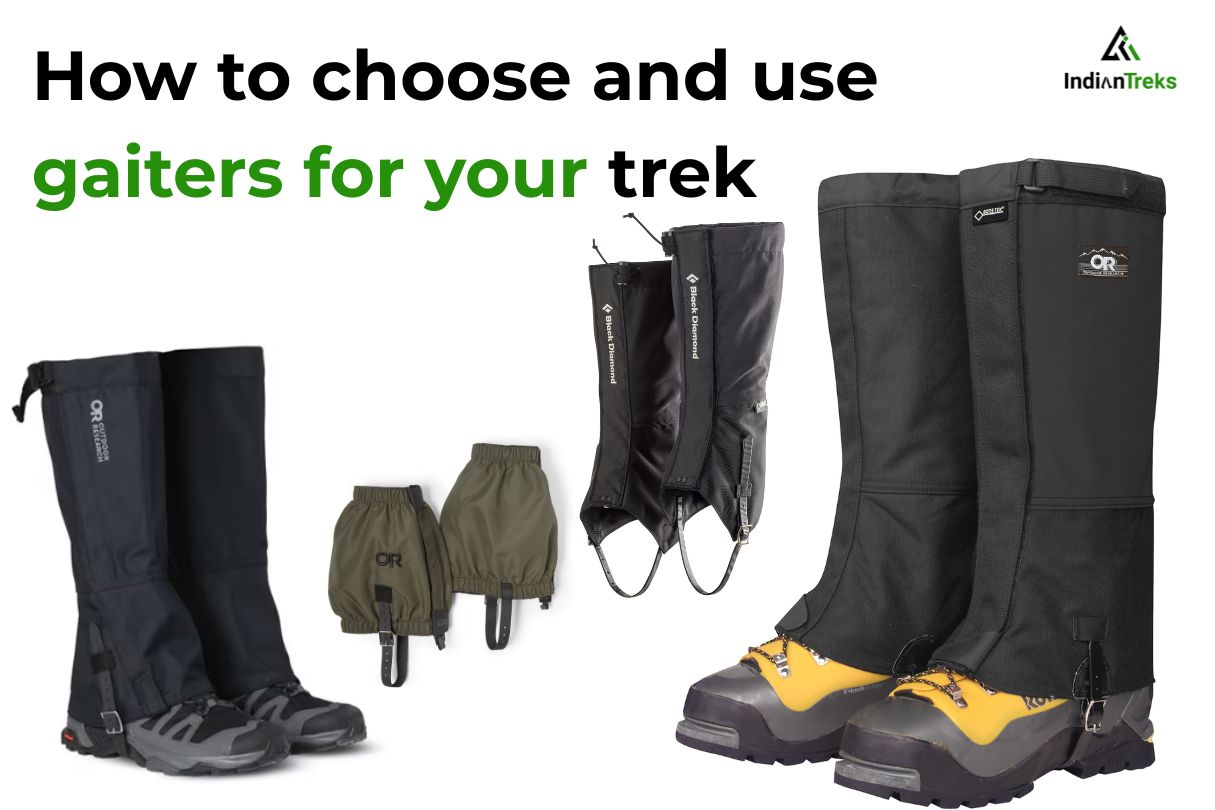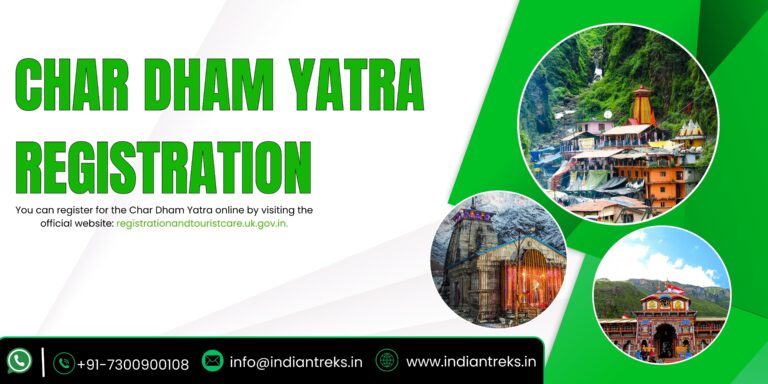How to Choose and Use Gaiters for Your Trek
At Indian Treks, we know that the right gear can make all the difference on a trek. Mountains are unpredictable — from sudden rain to slippery trails and deep snow — and having the right equipment keeps you safe and comfortable. That’s why we created how to use: a practical guide to help you choose, understand, and use trekking and climbing gear effectively.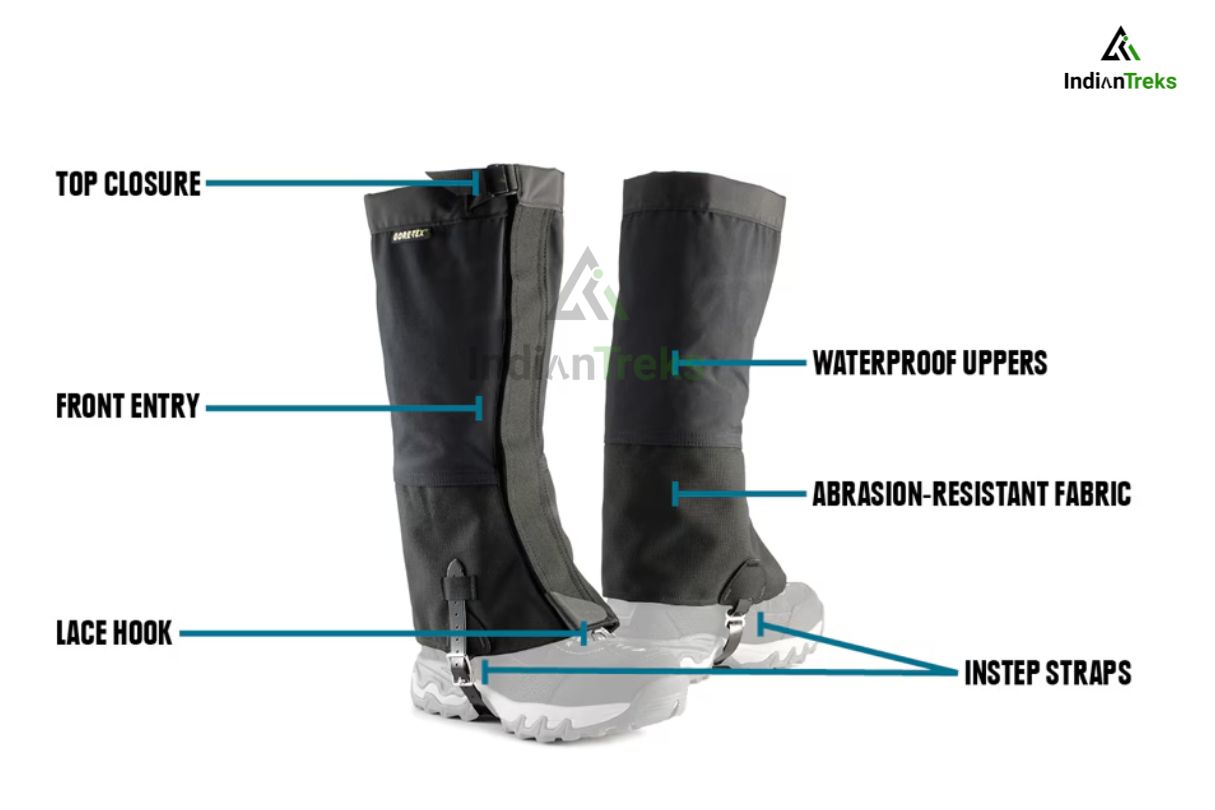
From backpacks and boots to gaiters and microspikes, we share tips drawn from years of Himalayan experience, making it easy to pick the right gear and use it correctly. Whether you’re a beginner or an experienced trekker, these guides help you trek smarter, safer, and more confidently.
Types Of Gaiters
Gaiters come in different styles, each designed to suit specific outdoor activities and conditions. Choosing the right type depends on your trek, terrain, and expected weather. Here’s a breakdown of the main types: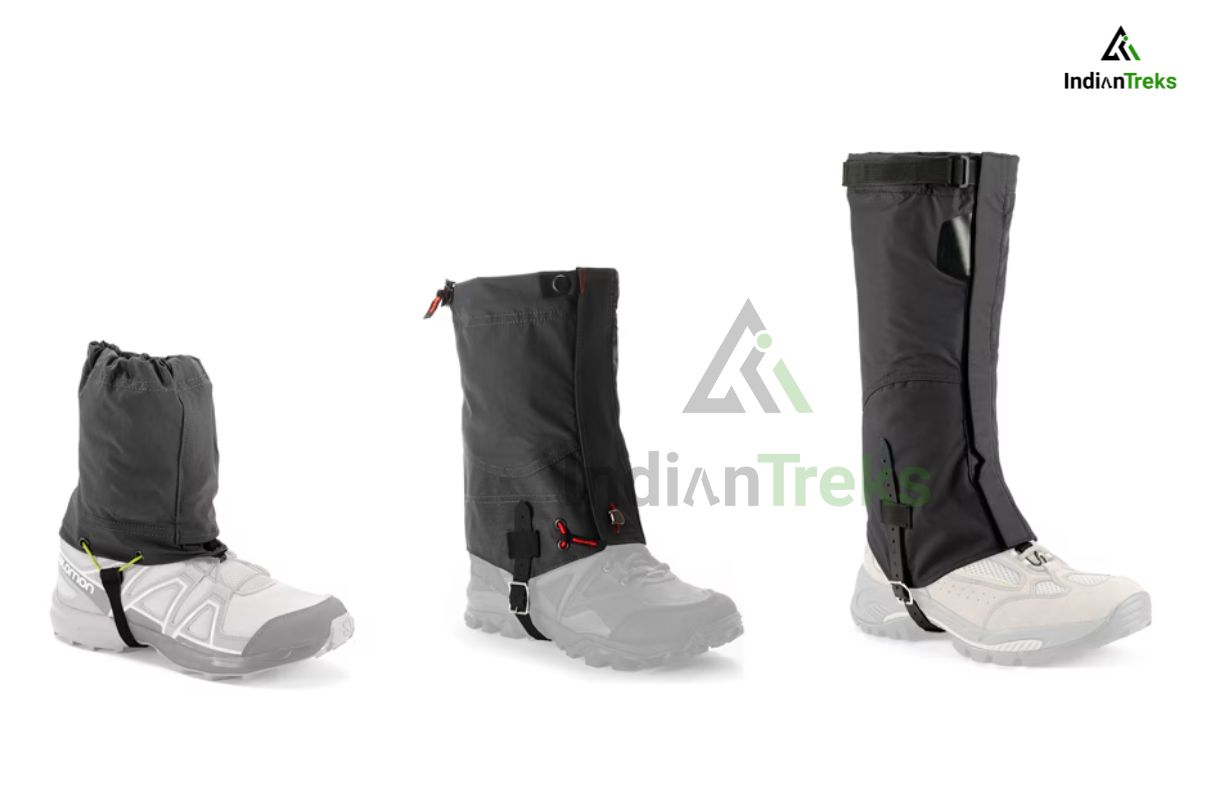
Hiking Gaiters
Lightweight and breathable, hiking gaiters are perfect for everyday trekking and moderate trails. They protect your boots from dirt, small rocks, mud, and light rain. Ideal for long walks or multi-day hikes, hiking gaiters keep your feet dry and comfortable without adding unnecessary bulk.
Mountaineering Gaiters
For extreme conditions, mountaineering gaiters are essential. Heavy-duty, waterproof, and often insulated, they shield your feet and lower legs from deep snow, ice, and freezing rain. Designed for serious treks and high-altitude climbs, these gaiters are perfect for challenging expeditions where weather can turn harsh quickly.
Trail Running Gaiters
Trail running gaiters are lightweight and minimal, designed to keep debris out of your shoes while running on rugged trails. They’re not waterproof, but they are excellent for fair-weather runs, maintaining comfort and preventing pebbles, sand, or leaves from slowing you down.
How To Choose Gaiters
Choosing the right gaiters is just as important as knowing how to use them. A good pair of gaiters not only protects your feet but also lasts longer and performs well in tough conditions. Look for the following key features when selecting gaiters: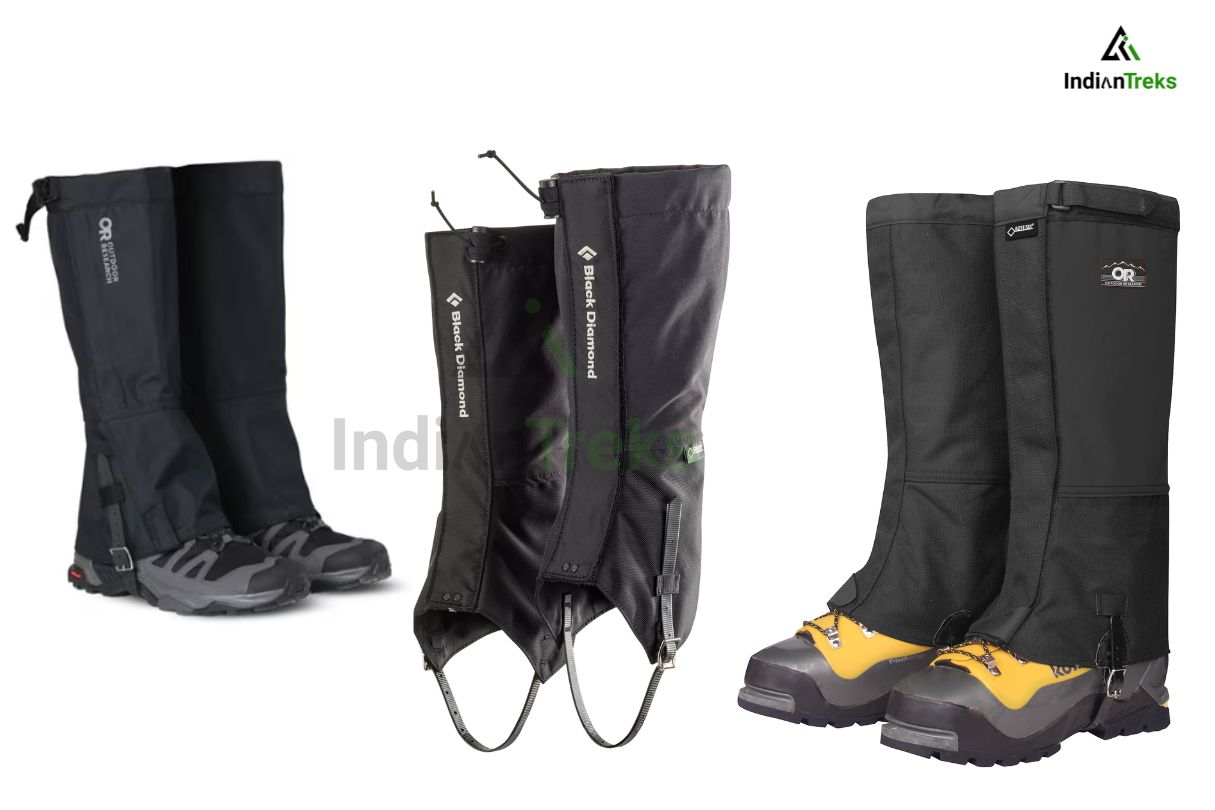
Zipped closure: Ideally with a waterproof zipper, or a zipper protected by a storm flap with Velcro for extra security.
Durable fabric: Made from waterproof and abrasion-resistant material to withstand rocks, snow, and mud.
Elasticated drawcord: Ensures a snug fit at the top, keeping debris and water out.
Lace hook: Attaches to the front of your boot for stability.
Instep or stirrup strap: Secures the gaiters under your boots. Most gaiters come with either nylon or rubber straps — nylon straps are generally more durable and easier to adjust.
How To Use Gaiters
A gaiter is only effective if worn correctly. If it’s not properly fitted, mud, snow, pebbles, and other debris can still sneak into your boots, leaving your feet wet, cold, and uncomfortable. Spending time readjusting poorly worn gaiters on the trail can also slow you down and drain your energy. To get the most out of your gaiters, follow these steps carefully: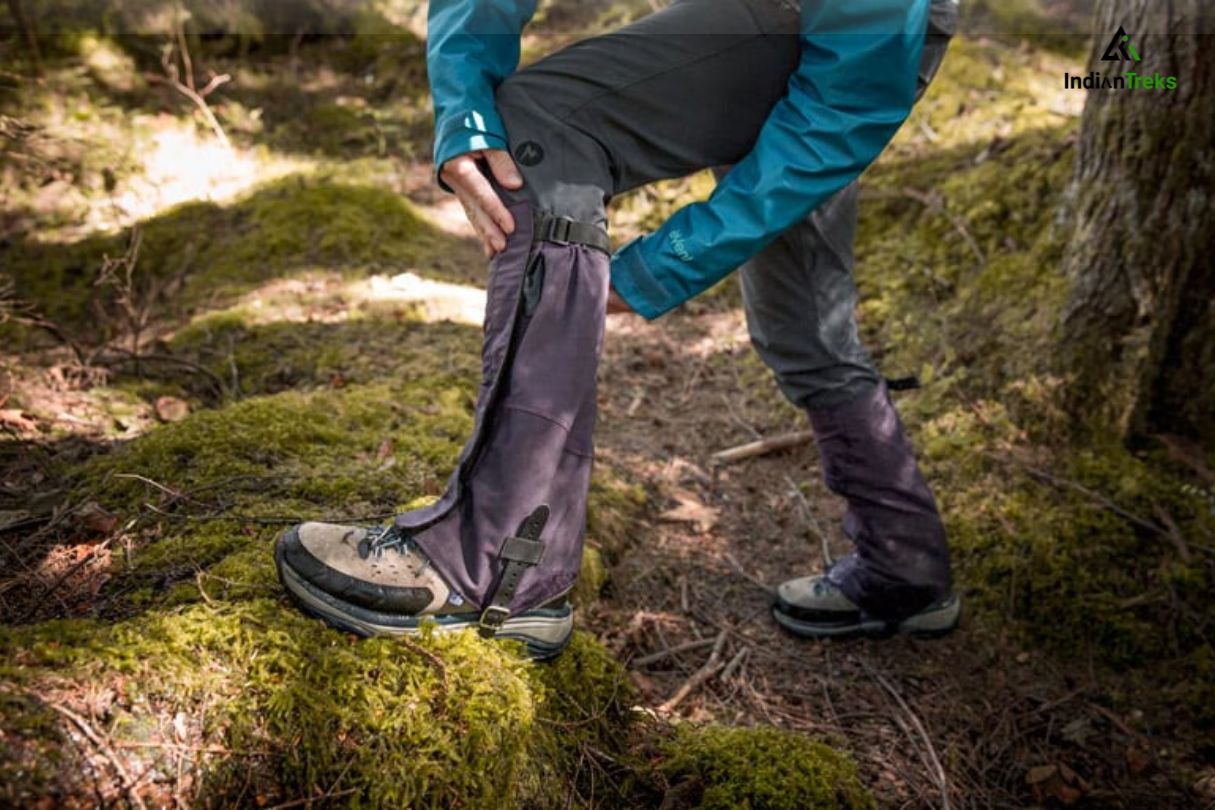
Start while seated: Sit down with your hiking shoes or boots on. This gives you full control and makes adjusting the gaiters easier.
Open the gaiter completely: Make sure the instep or stirrup strap is fastened before you begin. This strap will sit under your boot and keep the gaiter in place.
Position the instep strap: With the adjustment buckle on the outside of your foot, lift your heel and slide the strap under your boot. The strap should rest in the small cavity between the heel and the sole. This ensures the gaiter won’t slip while walking.
Attach the lace hook: Close the zipper a few inches and stretch the lace hook to clip it onto your boot laces. Many boots have special loops to secure gaiter hooks — if yours do, use them for added stability.
Zip up and secure: Fully zip the gaiter and close the storm flap if it has one. This creates a protective seal around your boot.
Adjust the instep strap: Make sure the strap is tight enough to hold the gaiter securely but not so tight that it digs into your foot.
Tighten the top drawcord: Pull the drawcord snug around your calf to prevent dirt, snow, or water from entering. It should fit comfortably without restricting circulation.
Repeat on the other leg: Take the same care with the other gaiter to ensure both feet are fully protected.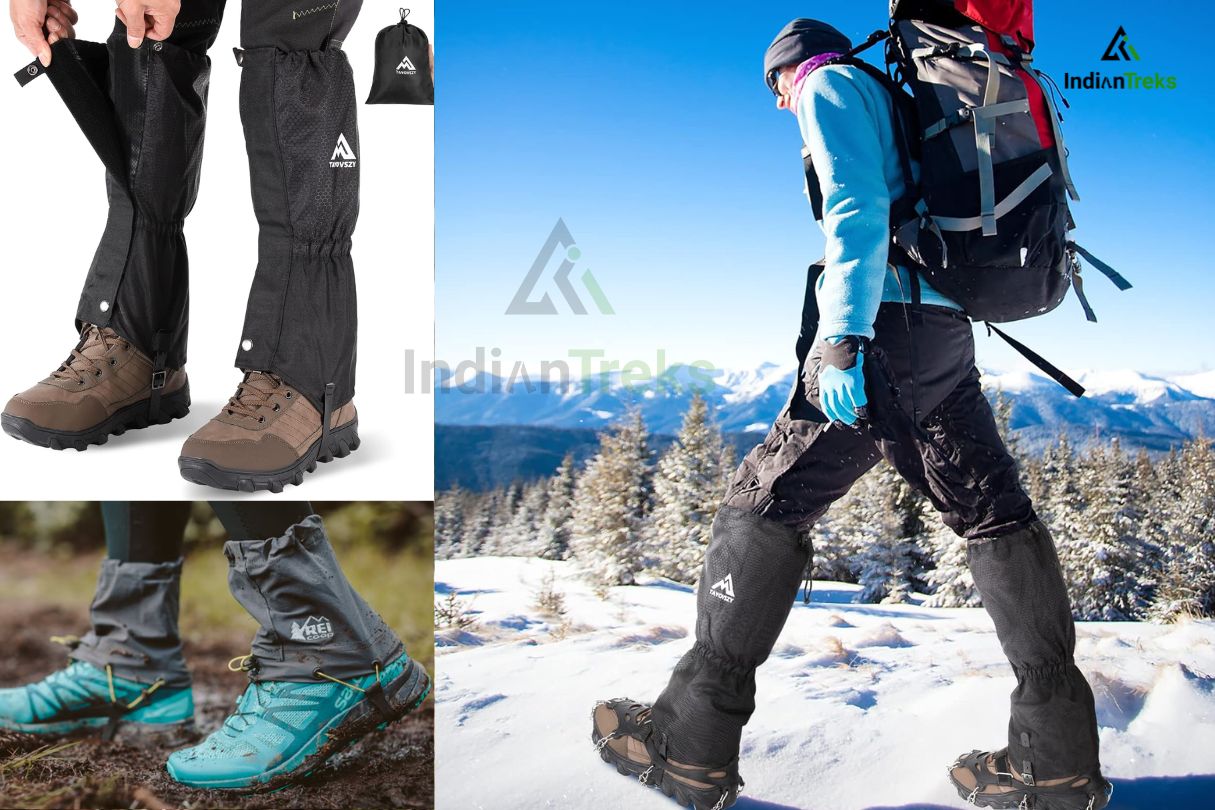
conclusion
Choosing the right gaiters is essential for a safe and comfortable trek. This is especially true during winter or at high altitudes. For example, when trekking the snowy slopes of Kedarkantha or crossing the scenic Kuari Pass, well-fitted gaiters protect your feet from snow, mud, and debris. Similarly, on challenging adventures like the Black Peak Expedition or the frozen trails of Brahmatal, insulated and waterproof gaiters keep your feet warm and dry.
Moreover, at Indian Treks, our experienced trek leaders always provide guidance. They not only show you how to wear and adjust your gaiters correctly but also give practical tips to improve comfort and protection. Therefore, you can focus fully on the adventure instead of worrying about wet boots or cold feet.
In addition, with the right gaiters and expert support, every step becomes safer and more enjoyable. Consequently, you can confidently explore the Himalayan trails and experience their breathtaking beauty without any distractions. Furthermore, proper gear and guidance ensure that your trek remains comfortable, safe, and memorable from start to finish.
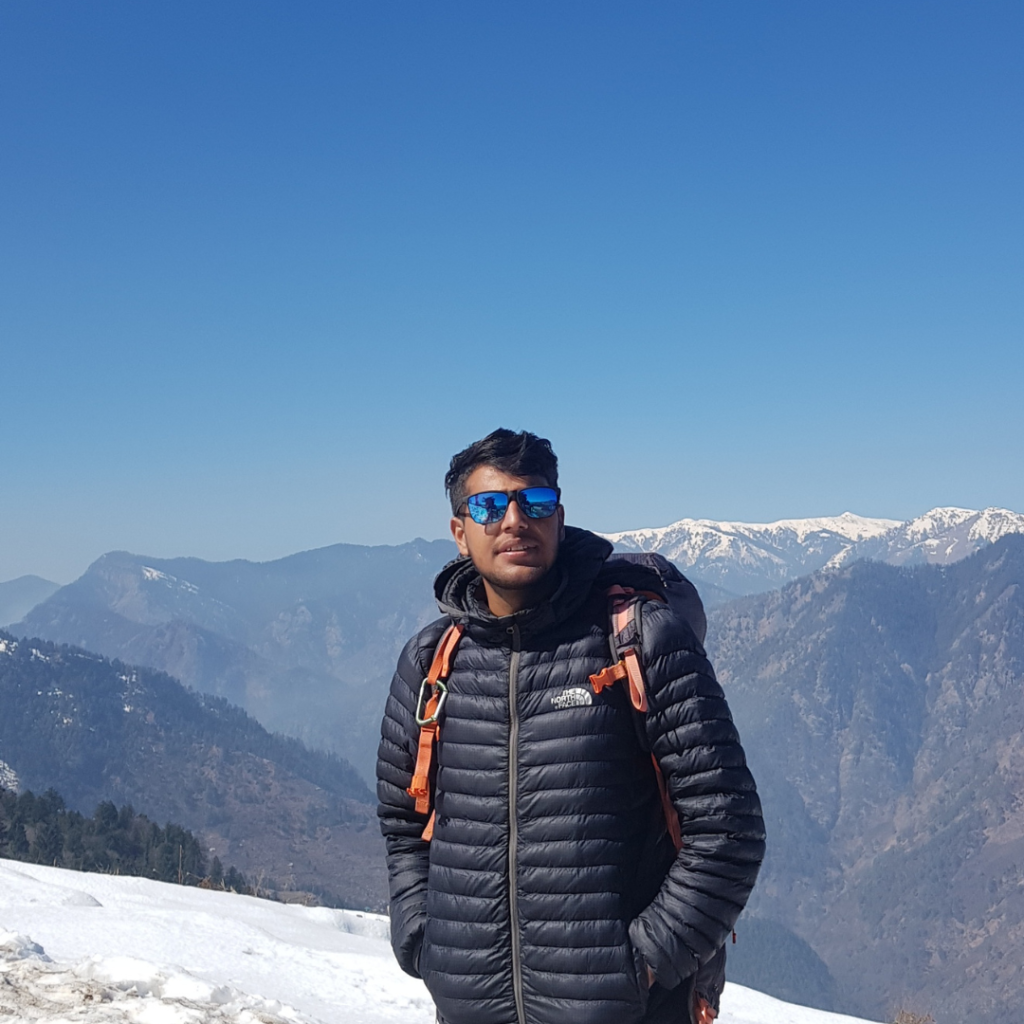
About Author – Vivek Rana
With nearly 10 years of experience in high-altitude guiding, the founder of this trekking organization is more than just a trek leader—they are a pioneer of adventure in the Himalayas. Having conquered multiple 6000-7000 meter peaks, they have led over 150 treks across the most breathtaking and challenging terrains, including Har Ki Dun, Kedarkantha, Borasu Pass, Bali Pass, Buran Ghati, Rupin Pass, Pin Bhabha, and the mighty Black Peak.
Their deep-rooted connection with the mountains isn’t just about reaching summits—it’s about creating life-changing experiences for those who dare to explore. Every expedition they lead is an invitation to step beyond limits, embrace the wilderness, and feel the raw power of the Himalayas like never before.
This is not just trekking; this is a journey into the heart of the mountains—with a guide who knows them like a lifelong friend.

